Live Chat
Need Help?
Privacy PolicyMeet the Newest Addition to Your Design Team
Find out how easy it is to create a development environment to take your idea from concept to prototype. The customizable Curiosity Nano Development Platform includes cost-effective Curiosity Nano boards and the versatile Curiosity Nano Base for Click boards™ to provide you with an excellent starting point for creating innovative designs.
Curiosity Nano boards feature a variety of 8-bit PIC® and AVR® microcontrollers (MCUs), 16-bit PIC MCUs and 32-bit Arm® Cortex® core-based SAM MCUs, and dsPIC33C DSCs allowing you to easily evaluate different architectures for your design. They also offer full programming and debugging capabilities to support you throughout your development process. Each Curiosity Nano board is compatible with the Curiosity Nano Base for Click boards. This base includes a socket that fits all Curiosity Nano boards plus three mikroBUS™ sockets and an Xplained Pro socket that will enable you to effortlessly expand your design with sensors, connectivity modules and more.
As an incredibly adaptable toolset for taking your project from exploration to working prototype, the Curiosity Nano Development Platform will be a welcome addition to your design team.
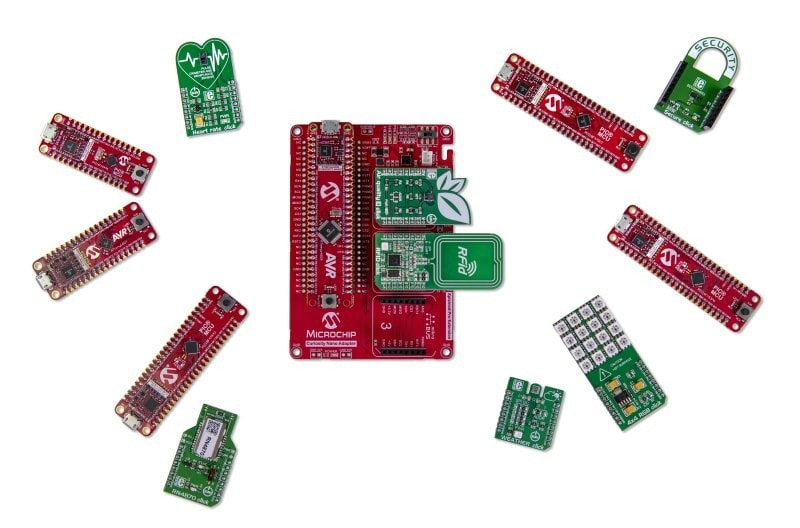
Why Choose a Curiosity Nano Board for Prototyping Your Design?
How This Platform Works
- Select the target PIC or AVR MCU or dsPIC33C DSCs for your design by choosing a Curiosity Nano board
- Select from the hundreds of MikroElektronika Click boards to add sensors, interfaces, connectivity modules and more to your project
- Simply plug the Curiosity Nano board and Click boards into the base board to complete your custom development environment
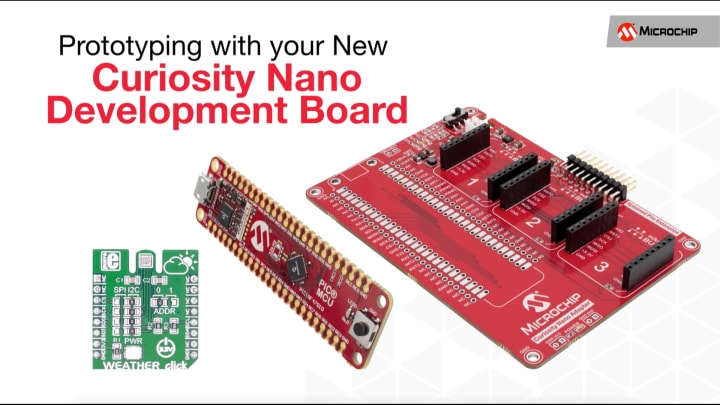

dsPIC33CK64MC105 Curiosity Nano Evaluation Kit
Quickly prototype your application using the high-performance dsPIC33CK DSC with our dsPIC33CK64MC105 Curiosity Nano Evaluation Kit that includes an on-board debugger. The board simplifies evaluating the dsPIC33C DSC’s feature set and prototyping real-time control, sensor interfacing and control, high-performance embedded, functional safety and robust touch applications

PIC24FJ64GU205 Curiosity Nano Development Board
Extend battery life in your sensor node, IoT and portable applications with the cost-effective PIC24FJ64GU205 MCU, which offers sleep currents down to a few hundreds of nA while completely retaining RAM content. It also offers 64 KB of ECC Flash, 8 KB of RAM, a 12-bit/400 ksps Analog-to-Digital Converter (ADC), three analog comparators, several Core Independent Peripherals (CIPs) and Full Speed USB 2.0 Host/Device/OTG.
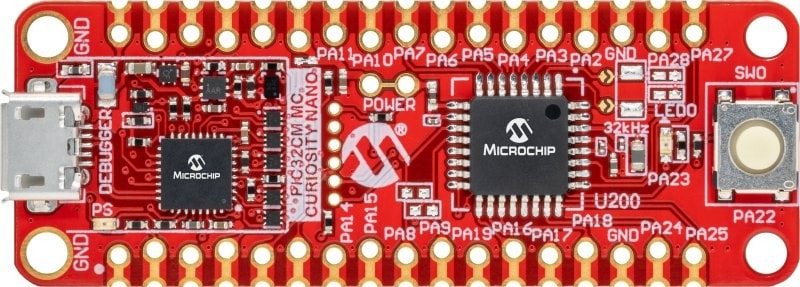
PIC32CM MC Curiosity Nano Evaluation Kit
Explore the 5V, low-cost PIC32CM MC MCU with the PIC32CM MC Curiosity Nano Evaluation Kit. Supported by MPLAB® X Integrated Development Environment (IDE) and MPLAB Harmony v3 software development framework, it provides easy access to all the features of the PIC32CM MC MCU so you can quickly integrate the device into a custom design. It also contains an on-board Nano Debugger for programming and debugging, eliminating the need for extra tools to program the device.

PIC18F16Q41 Curiosity Nano Evaluation Kit
Improve your sensor node design with the PIC18F16Q41 Curiosity Nano Evaluation Kit, which allows you to leverage sophisticated analog peripherals and powerful Core Independent Peripherals to implement data acquisition and sensor interfacing applications.

SAM E51 Curiosity Nano Evaluation Kit
Power up your projects with our most versatile Arm® Cortex®-M4 based MCU. Featuring the SAM E51 family, this Curiosity Nano board provides I/O access to major peripherals including ADC, DAC, SERCOM, timers, Peripheral Touch Controller (PTC), USB and CAN FD. Since it doesn’t need any external programming or debugging tools, you can hit the ground running with a high-performance microcontroller that is ready to take on tasks in a variety of applications, ranging from general-purpose through more complex industrial designs.

SAM D21 Curiosity Nano Evaluation Kit
Take your next 32-bit embedded application from proof of concept to production with our low-cost Arm® Cortex® M0+ based SAM D21 Curiosity Nano Evaluation Kit. This self-contained and modular board interfaces with a variety of MikroElektronika and XPro expansion boards, allowing you to quickly, easily and cost effectively customize your prototype with additional features and capabilities.
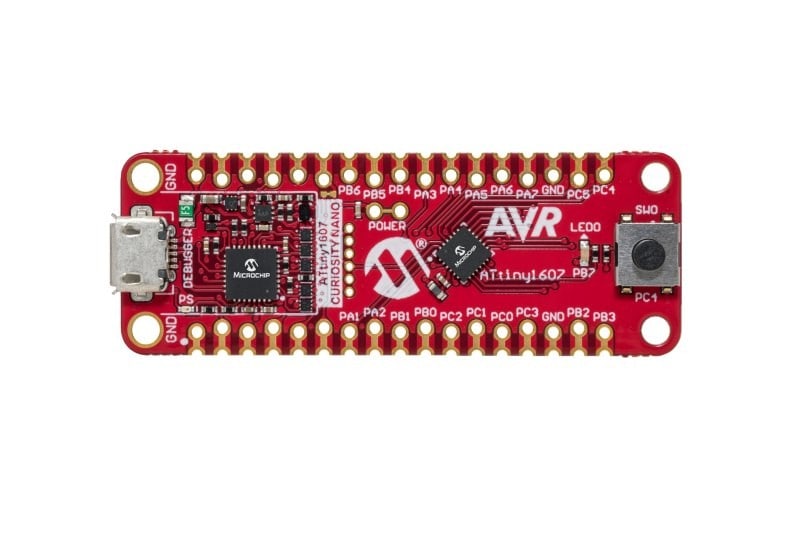
ATtiny1627 Curiosity Nano
The ATtiny1627 family of AVR® microcontrollers (MCUs) is equipped with high-speed integrated analog, hardware-based Core Independent Peripherals (CIPs) and low-power performance for efficient real-time control and sensor node applications. For design flexibility and to optimize your board layout, this family of 4 KB to 32 KB Flash devices is available in SOIC, SSOP and VQFN packages ranging from 14 to 24 pins.
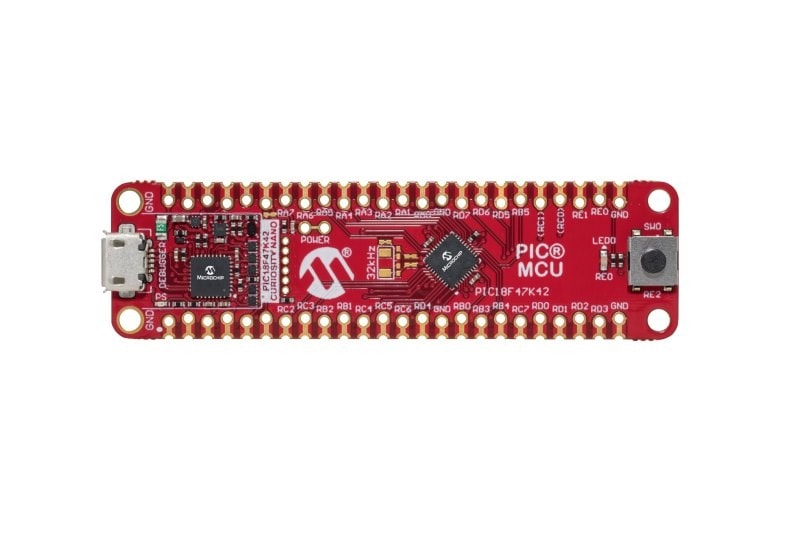
AVR128DB48 Curiosity Nano
The AVR® DB family builds upon the low-power performance of the AVR core with a world-class selection of Core Independent Peripherals (CIPs) and a fully loaded Intelligent Analog portfolio, giving you the freedom to design tomorrow’s solutions today. Featuring three on-chip operational amplifiers (op amps), this family is unparalleled in its signal conditioning capabilities. With its Multi-Voltage I/O (MVIO) that functions as integrated level shifters, the AVR DB is a perfect companion microcontroller (MCU) in complex designs with multiple power domains.
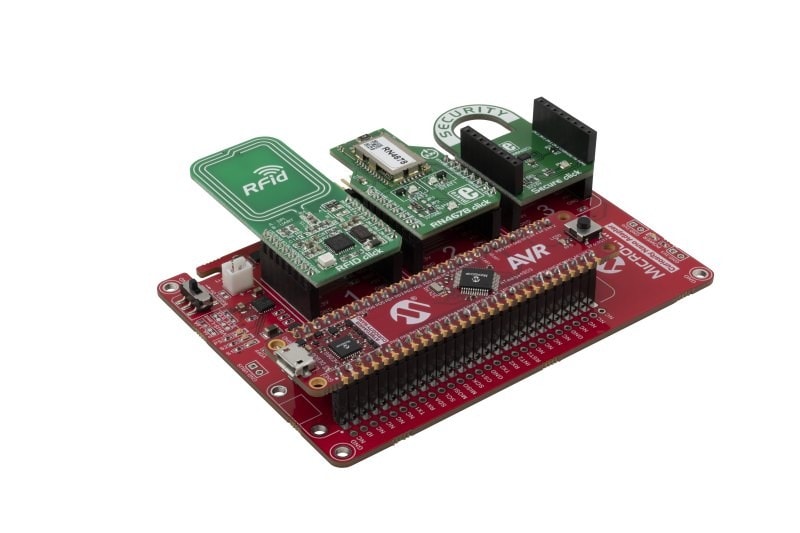
Curiosity Nano Base for Click boards™
The Curiosity Nano Base for Click boards is more than just a base board; it’s the ultimate rapid prototyping base for creating innovative projects. You can easily plug different Curiosity Nano boards into the socket, which allows you to try out different MCUs without redesigning your hardware. The three on-board mikroBUS™ sockets make it simple to add MikroElektronika Click boards to expand the features and functionality of your design.
Need Some Help?
We are here to support you. Contact our Client Success Team to get assistance with your design.

Curiosity Nano Unboxing Video
Did you recently purchase a Curiosity Nano Board? In this quick unboxing video, we will quickly show you to get up and running with your new development tool.

dsPIC33CK64MC105 Curiosity Nano Evaluation Kit Overview
The dsPIC33CK64MC105 Curiosity Nano Evaluation Kit is a cost-effective hardware platform to evaluate the dsPIC33CK family of high-performance Digital Signal Controllers (DSCs). Find out how easy it is to get started with the dsPIC33CK Curiosity Evaluation Kit and explore our dsPIC33 DSCs for your next design.

PIC24FJ64GU205 MCU Family and Curiosity Nano Development Board
This video introduces the PIC24FJ64GU205 family of eXtreme Low Power (XLP) microcontrollers and the PIC24FJ64GU205 Curiosity Nano Development Board.

Curiosity Nano Development Platform

Getting Started with SAM D21 Curiosity Nano Evaluation Kit
This video explains how to create a simple application on a SAM D21 Arm® Cortex®-M0+-based microcontroller using MPLAB® Harmony v3. It is supported by our free-to-use MPLAB Harmony v3 embedded software development framework that runs in the MPLAB X Integrated Development Environment (IDE).

Getting Started with the SAM E51 Curiosity Nano Evaluation Kit
Getting Started with the SAM E51 Curiosity Nano Evaluation Kit
This video explains how to create a simple application on a SAM E51 Arm® Cortex®-M-based microcontroller using MPLAB Harmony v3. It is supported by our free-to-use MPLAB® Harmony v3 embedded software development framework that runs in the MPLAB X Integrated Development Environment (IDE).

Getting Started with the PIC32CM MC00 Curiosity Nano Evaluation Kit
This video explains how to create a simple application on a PIC32CM MC Arm® Cortex®-M0+-based microcontroller using MPLAB Harmony v3. It is supported by our free-to-use MPLAB® Harmony v3 embedded software development framework that runs in the MPLAB X Integrated Development Environment (IDE).